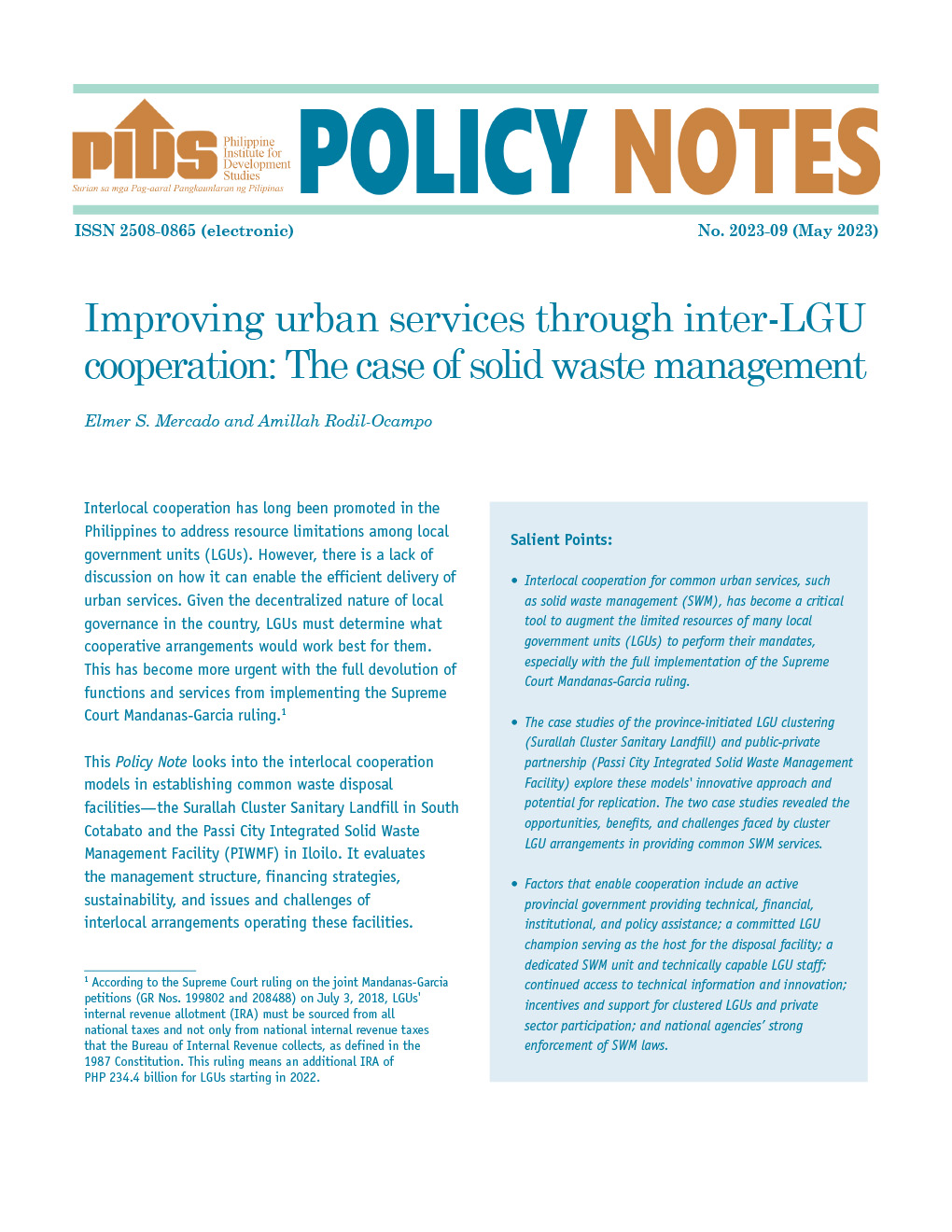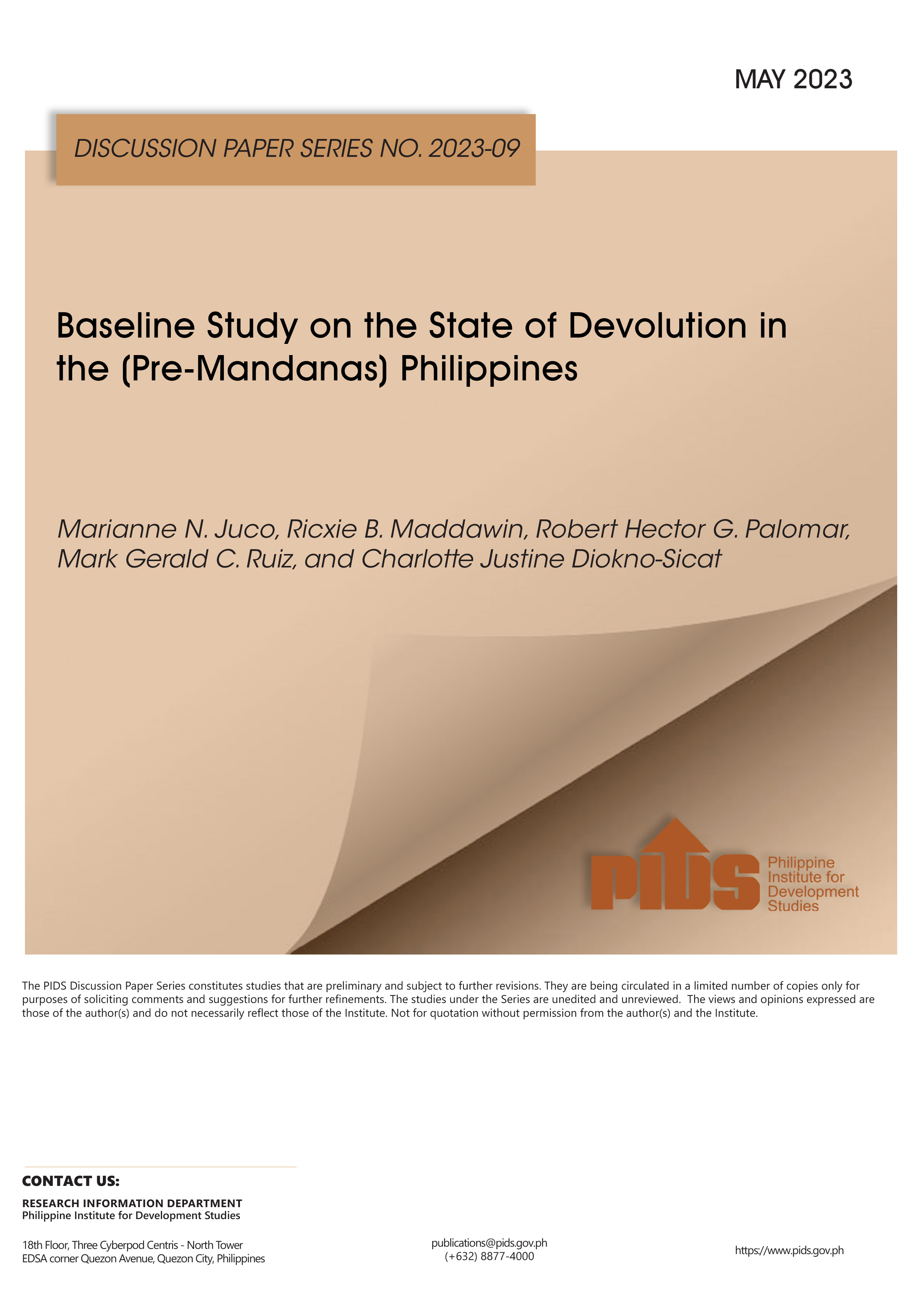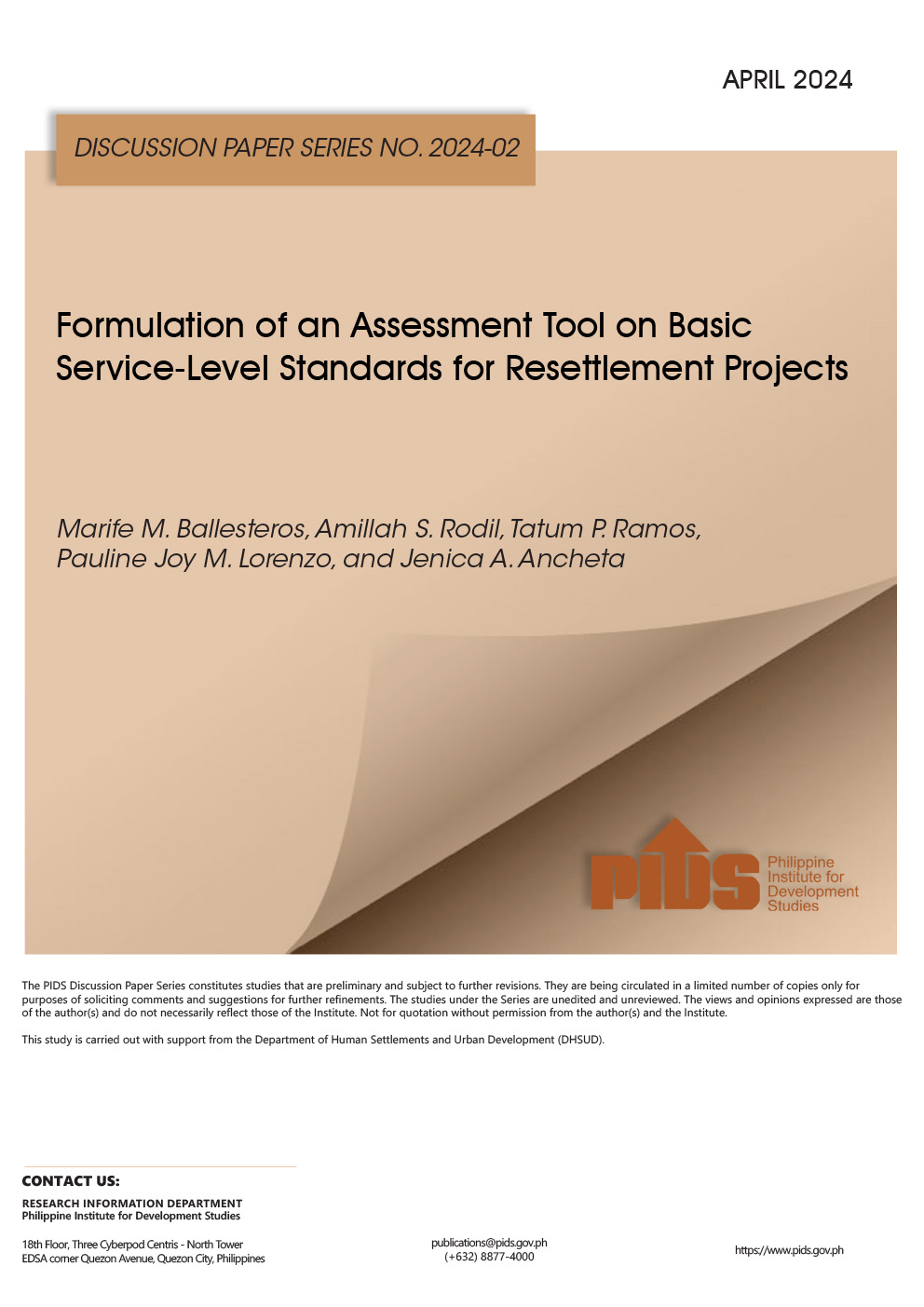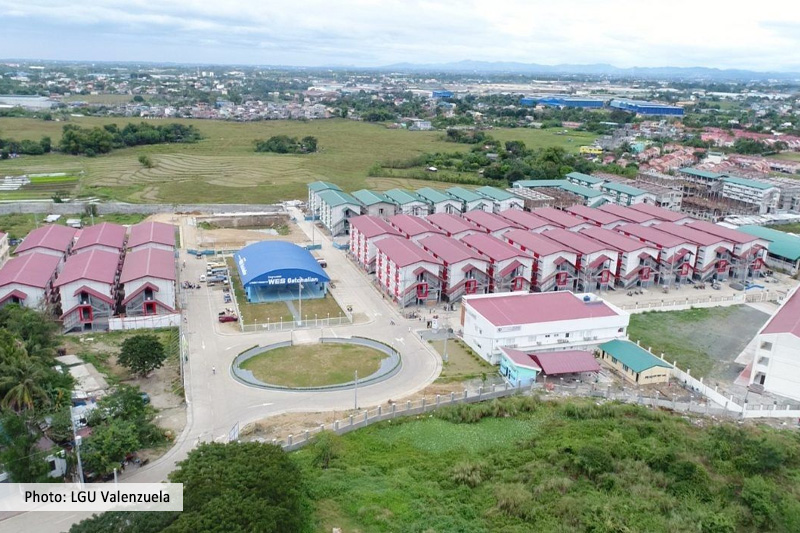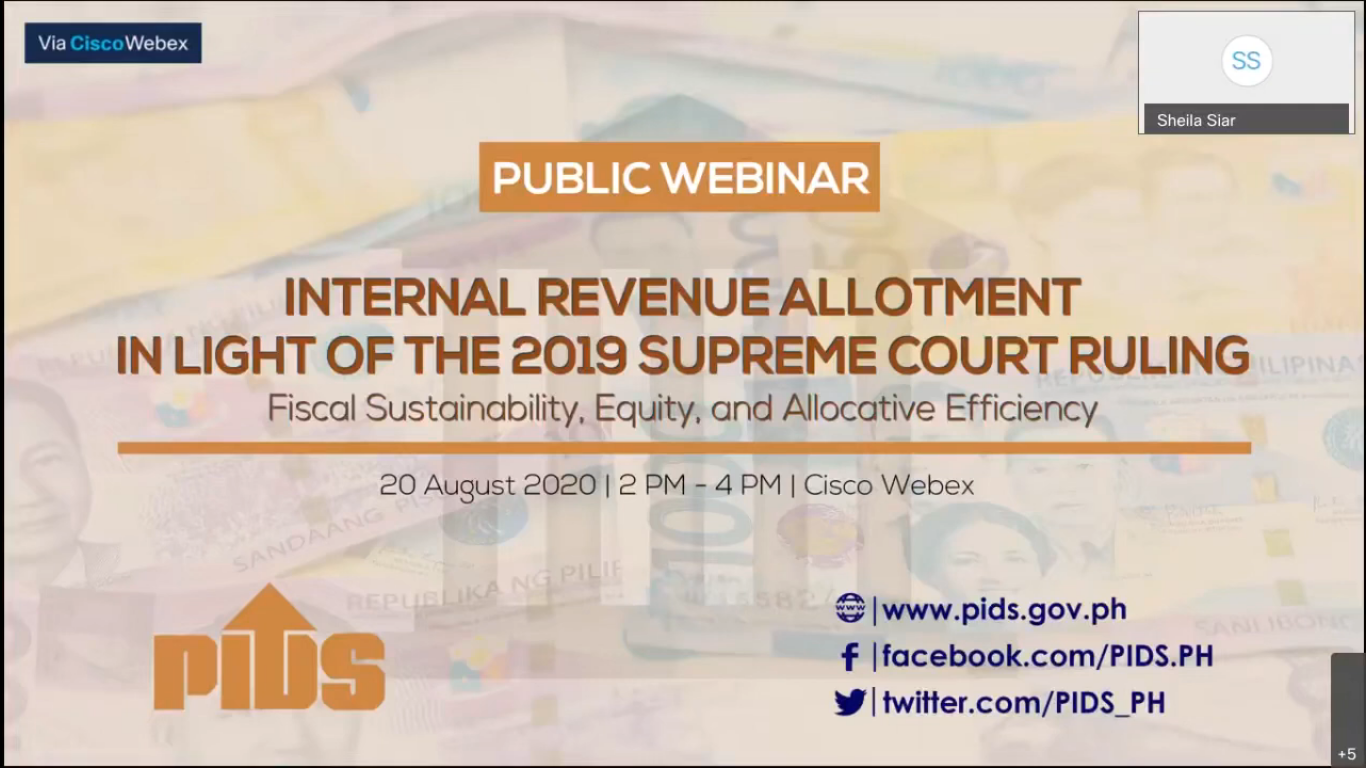THE Supreme Court ruling that would lead to higher funds for local government units (LGUs) may prompt the national government to unfund P225.3 billion worth of projects and programs, according to a study released by the Philippine Institute for Development Studies (PIDS).
This is possible, former PIDS Senior Research Fellow Rosario G. Manasan said in a recent webinar, given that there are projects included in the budgets of national agencies that can and should be undertaken by local governments.
Manasan said if this is going to be followed, the national government may even free up a higher amount of P247.583 billion. This leaves P22.3 billion that can be used for other important expenses.
“Some of the functions in Section 17 are stated in broad sectoral terms so that said functions may not appropriately be assigned to LGUs when considered in their entirety based on principles of expenditure assignment in the fiscal decentralization literature [so there is a] need to unbundle/deconstruct these broadly defined functions,” Manasan said in a presentation.
Equalization fund
In order to maximize the P22.3 billion, Manasan said this can be distributed as an equalization fund and as national government counterpart in conditional matching grant or cost-sharing arrangement.
This, Manasan said, will act as an incentive to LGUs to spend in a manner that is consistent with national priorities and objectives.
An equalization fund, Manasan said, can address “vertical imbalances” in fiscal resources across different LGUs. Even with the increase in IRA, the net incremental IRA is negative for provinces and cities, with provinces having a larger negative transfer compared to cities.
This, Manasan said, was also observed in the net incremental IRA transfer that is positive for municipalities and barangays where municipalities have higher transfers than barangays. Apart from this, there are horizontal imbalances between and among LGUs. Manasan said this refers to the low resources that LGUs have versus the amount they need to provide local services.
Manasan said the top 10 provinces who received the higher per- capita net transfers were Batanes and Dinagat Islands which received P4,577 per-capita transfer and P1,135 per capita transfer.
The provinces with the lowest per-capita transfers are the Mountain Province at -P3,229; Abra with -P2,752; and Palawan, -P2,346 per- capita transfer.
In terms of municipalities, the one that received the highest per-capita net resource transfer was Kalayaan, Palawan, with P125,150 followed by Uyugan, Batanes, with a far P5,673 per capita.
The municipalities with the lowest were Botolan, Zambales, at -P2,942 and Candelaria, Zambales, at -P2,626 per-capita net resource transfer.
Across cities, those which received the highest were Santiago and Iligan cities with P3,274 and P3,129 per-capita net resource transfer, respectively.
The lowest were Kabangkalan, Sipalay, and Bislig with -P2,523, -P2,488, and -P2,251 per-capita net resource transfer, respectively.
“Horizontal imbalance indicates need for equalization grants,” Manasan stressed.
Devolved services
Apart from using the P22.3 billion that is in excess of the amount required to fund the increase in the IRA, Manasan recommended the creation of local demand for devolved services.
She said this entails raising public awareness of the roles played by the national and local governments in local services. Instead of holding national governments accountable for traffic or poor health care, citizens should look to local executives since these services are devolved.
Manasan said this should also prompt the national and local governments to include citizens and civil society organizations in local planning and budgeting.
Under the Local Government Code, agriculture extension services and on-site research; natural resources management; environmental; health; and local infrastructure services are part of the responsibility of the local government.
The list includes social welfare; housing; disaster risk and reduction management; tourism; intermunicipal telecommunication; planning; and regulatory services such as business permits and zoning are also under the purview of LGUs.
In January 2012, former Governor Hermilando Mandanas asked the Supreme Court to compel the national government (NG) to include the internal revenue taxes collected by the Bureau of Customs (e.g., VAT, excise taxes, documentary taxes) in computing the aggregate share of LGUs in national internal revenue taxes as provided under Section 284 of the 1991 LGC.
He also questioned the deduction of tax revenues earmarked for LGUs (or some subsets of LGUs) from the base used to compute the IRA (e.g., share of tobacco producing LGUs in excise tax on cigarettes), and other deductions like the 1⁄2 of 1 percent of national taxes as auditing fee of the Commission on Audit (COA).
In July 2018, the SC ruled that: the aggregate IRA should be computed as 40 percent of all taxes; deductions from the IRA being questioned by Mandanas are valid; the application is prospective on the basis of the post-operative doctrine; and the increase in the IRA arising from this ruling will start in 2022.
Impact of ruling
In December 2019, the Development Budget Coordination Committee (DBCC) estimated that the Mandanas ruling will increase the aggregate IRA in 2022 to P1.102.7 trillion or 0.9 percent of GDP. This is an increment of P225.3 billion from P847.4 billion.
Further, Manasan cited the more recent DBM estimates of increase in aggregate IRA in 2022 of P234.4 billion to P1.083 trillion from P848.4 billion.
This is possible, former PIDS Senior Research Fellow Rosario G. Manasan said in a recent webinar, given that there are projects included in the budgets of national agencies that can and should be undertaken by local governments.
Manasan said if this is going to be followed, the national government may even free up a higher amount of P247.583 billion. This leaves P22.3 billion that can be used for other important expenses.
“Some of the functions in Section 17 are stated in broad sectoral terms so that said functions may not appropriately be assigned to LGUs when considered in their entirety based on principles of expenditure assignment in the fiscal decentralization literature [so there is a] need to unbundle/deconstruct these broadly defined functions,” Manasan said in a presentation.
Equalization fund
In order to maximize the P22.3 billion, Manasan said this can be distributed as an equalization fund and as national government counterpart in conditional matching grant or cost-sharing arrangement.
This, Manasan said, will act as an incentive to LGUs to spend in a manner that is consistent with national priorities and objectives.
An equalization fund, Manasan said, can address “vertical imbalances” in fiscal resources across different LGUs. Even with the increase in IRA, the net incremental IRA is negative for provinces and cities, with provinces having a larger negative transfer compared to cities.
This, Manasan said, was also observed in the net incremental IRA transfer that is positive for municipalities and barangays where municipalities have higher transfers than barangays. Apart from this, there are horizontal imbalances between and among LGUs. Manasan said this refers to the low resources that LGUs have versus the amount they need to provide local services.
Manasan said the top 10 provinces who received the higher per- capita net transfers were Batanes and Dinagat Islands which received P4,577 per-capita transfer and P1,135 per capita transfer.
The provinces with the lowest per-capita transfers are the Mountain Province at -P3,229; Abra with -P2,752; and Palawan, -P2,346 per- capita transfer.
In terms of municipalities, the one that received the highest per-capita net resource transfer was Kalayaan, Palawan, with P125,150 followed by Uyugan, Batanes, with a far P5,673 per capita.
The municipalities with the lowest were Botolan, Zambales, at -P2,942 and Candelaria, Zambales, at -P2,626 per-capita net resource transfer.
Across cities, those which received the highest were Santiago and Iligan cities with P3,274 and P3,129 per-capita net resource transfer, respectively.
The lowest were Kabangkalan, Sipalay, and Bislig with -P2,523, -P2,488, and -P2,251 per-capita net resource transfer, respectively.
“Horizontal imbalance indicates need for equalization grants,” Manasan stressed.
Devolved services
Apart from using the P22.3 billion that is in excess of the amount required to fund the increase in the IRA, Manasan recommended the creation of local demand for devolved services.
She said this entails raising public awareness of the roles played by the national and local governments in local services. Instead of holding national governments accountable for traffic or poor health care, citizens should look to local executives since these services are devolved.
Manasan said this should also prompt the national and local governments to include citizens and civil society organizations in local planning and budgeting.
Under the Local Government Code, agriculture extension services and on-site research; natural resources management; environmental; health; and local infrastructure services are part of the responsibility of the local government.
The list includes social welfare; housing; disaster risk and reduction management; tourism; intermunicipal telecommunication; planning; and regulatory services such as business permits and zoning are also under the purview of LGUs.
In January 2012, former Governor Hermilando Mandanas asked the Supreme Court to compel the national government (NG) to include the internal revenue taxes collected by the Bureau of Customs (e.g., VAT, excise taxes, documentary taxes) in computing the aggregate share of LGUs in national internal revenue taxes as provided under Section 284 of the 1991 LGC.
He also questioned the deduction of tax revenues earmarked for LGUs (or some subsets of LGUs) from the base used to compute the IRA (e.g., share of tobacco producing LGUs in excise tax on cigarettes), and other deductions like the 1⁄2 of 1 percent of national taxes as auditing fee of the Commission on Audit (COA).
In July 2018, the SC ruled that: the aggregate IRA should be computed as 40 percent of all taxes; deductions from the IRA being questioned by Mandanas are valid; the application is prospective on the basis of the post-operative doctrine; and the increase in the IRA arising from this ruling will start in 2022.
Impact of ruling
In December 2019, the Development Budget Coordination Committee (DBCC) estimated that the Mandanas ruling will increase the aggregate IRA in 2022 to P1.102.7 trillion or 0.9 percent of GDP. This is an increment of P225.3 billion from P847.4 billion.
Further, Manasan cited the more recent DBM estimates of increase in aggregate IRA in 2022 of P234.4 billion to P1.083 trillion from P848.4 billion.

